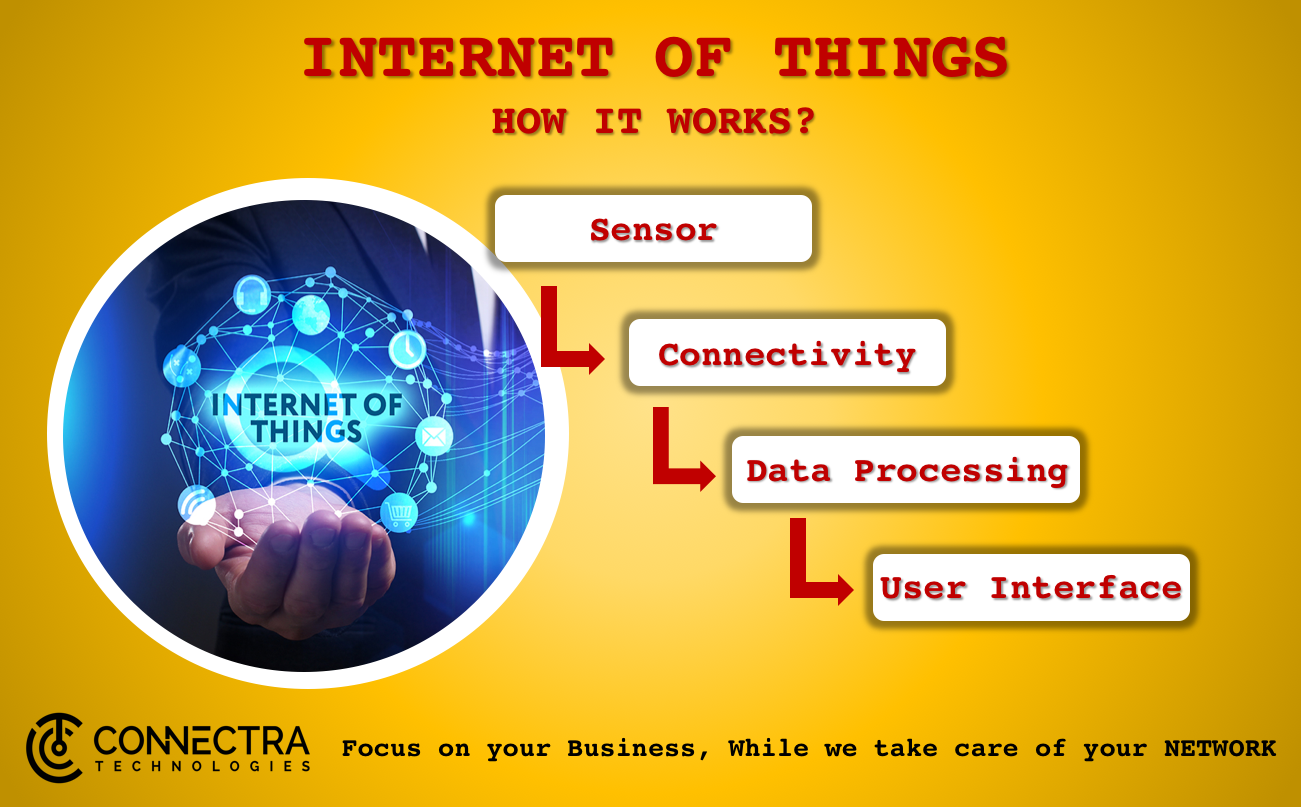Internet of Things and how it works?

The internet of things (IoT) refers to a computing concept that facilitates the idea of various everyday physical objects being linked to the internet and being able to identify these objects with other devices. For the method of communication, IoT depends on various sensor technologies, wireless technologies and QR codes. The concept of IoT can be understood as an object that can be represented digitally now. IN IoT, the object is not only related to the user but also to the surrounding objects and databases. When all of the objects act together, they are known as having ‘ambient intelligence’.

How internet of things (IoT) works?
A fully functional IoT system has four components:
- Sensors/Devices: Sensors and Devices are built in a way that allows them to collect information from their environment. The working of such devices could involve a simple collection of information or a complex task. In many cases, the sensors are a part of a device that perform multiple functions starting with data collection from the environment which is usually done with the help of a data accumulator.
- Connectivity: After the data has been collected, it is then sent over to the cloud which serves as a database. The transfer of data is done using a connectivity method such as cellular, satellite, Wi-Fi, Bluetooth or a direct internet connection. Deciding the best connectivity method ultimately depends on the specific IoT application, but all the methods give the same result, i.e. uploading the data to the cloud.
- Processing of data: After the data has been uploaded to the cloud, there is the need for the processing of the uploaded data. This could involve a simple check or a tedious procedure that involves proper analysis of the data collected.
- User interface: The procedure of data processing yields a certain result that could be useful to the user in one way or the other. Therefore, there occurs a need for a user interface that allows the user to proactively check on the IoT system.
Depending on the type of the IoT application that we might be using, the user can himself perform an action and affect the system instead of waiting for an alert from the application. In many cases, the important actions are performed automatically with help from some pre-defined rules in the system. But no matter what type of interface used by a particular application, all of the IoT applications have the above four basic components that make it an efficient system of operation.
With the rapid growth of new technologies that fuel the growth of internet related applications, IoT will only become more relevant in our everyday lives. This will help us in solving issues in different fields such as energy, healthcare, telecom, agriculture, transportation, logistics and etc. The internet connected devices will help in bringing more automation to industries, allowing greater control to the users over the devices. Also, with the gradual development of IoT over the years, we could see the development of smart cities and towns in the future.
CONTACT US for any Edge Computing and IOT related services.
 (888) 731-5210
(888) 731-5210